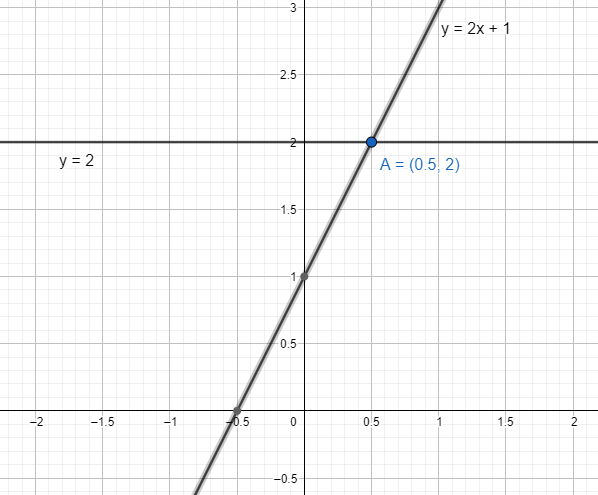Question
Question: How do you graph \(f\left( x \right)=2x+1\) and then use the horizontal test to determine whether th...
How do you graph f(x)=2x+1 and then use the horizontal test to determine whether the inverse of f(x) is a function?
Solution
We first explain the relation of inverse function with its function types. We find if the function is one-one or not. We use horizontal line tests to determine whether the inverse of f(x) is a function and find the function if it exists.
Complete step-by-step solution:
We need to find whether the function f(x)=2x+1 has an inverse or not through a horizontal line test. If it has an inverse then we find the inverse.
First, we find the characteristics of the function f(x)=2x+1. It is a one-one function.
This means for a particular value of x, we will get only one value of y.
So, every value of x can be projected to a particular value of y.
In case of one-one function, we can have an inverse always irrespective of the function.
In case many-one functions, we can’t have an inverse function.
Let’s assume that g(a)=g(b)=c for an arbitrary function g(x).
This is a two-one function. The domain has two values a,b that give the same value of c in range. Condition is a=b.
When we are taking the inverse, we get one value c in domain which gives two values a,b in range. That can’t be function as g−1(c)=a and g−1(c)=b but a=b.
The horizontal line test gives that for the function f(x) if any horizontal line represented as y=k on infinite extension cuts the graph more than once then the graph can’t have an inverse function.
For f(x)=2x+1, we have inverse function. Let y=2x+1 which gives x=2y−1.
Therefore, the inverse function is f−1(x)=2x−1.
We take a horizontal line represented as y=2. We draw the graphs of f(x)=2x+1 and y=2.
We find their intersection.

The only intersection is the point A=(21,2). Therefore, the inverse of f(x) exists.
Note: If the horizontal line intersects the graph of a function in all places at exactly one point, then the given function should have an inverse that is also a function. We say this function passes the horizontal line test.
